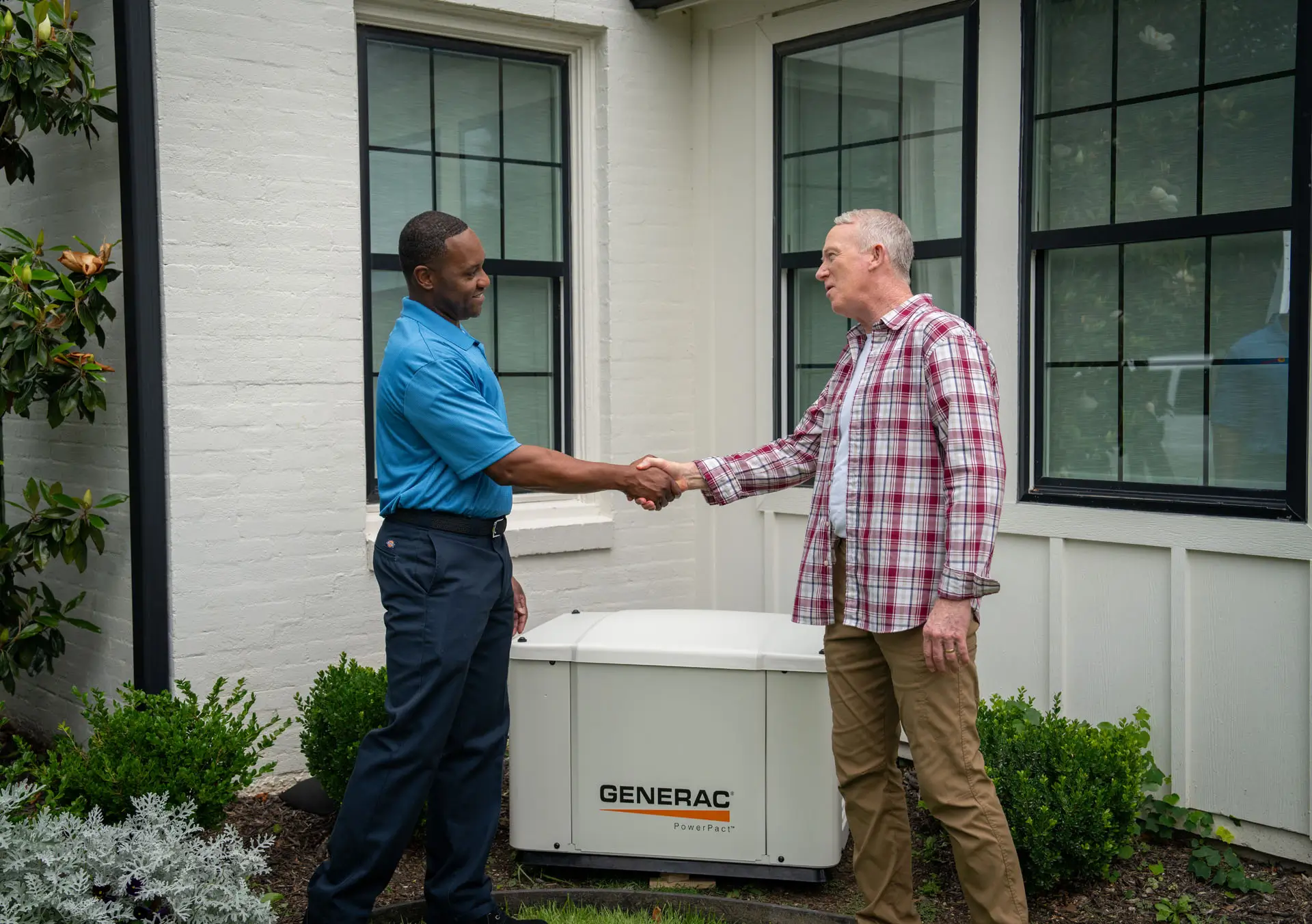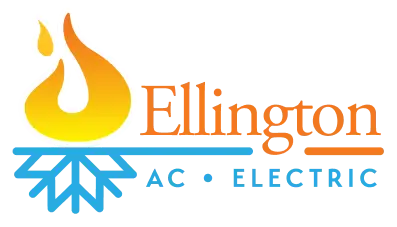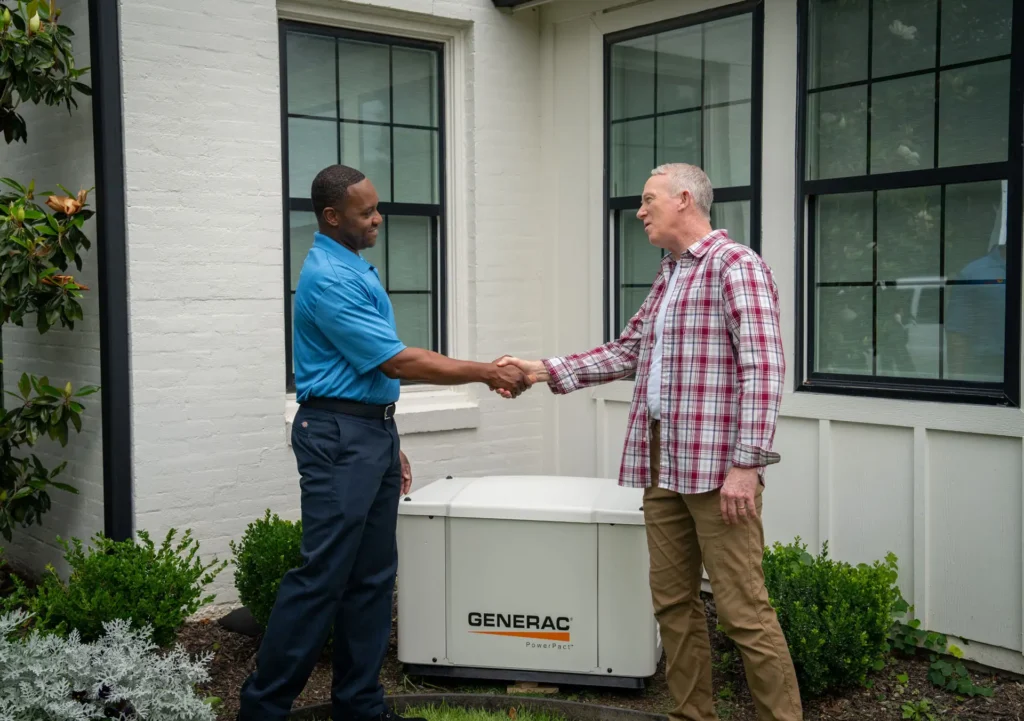

BLOG
How to Size a Home Generator for Your Power Needs

Choosing the right generator size is one of the most critical decisions you'll make when protecting your Rockledge home from power outages. Too small, and your generator won't power essential systems during a hurricane. Too large, and you're paying for unnecessary capacity while wasting fuel and money.
Understanding how to properly size a Generac whole-house generator ensures you get the reliability, efficiency, and safety your family deserves during Florida's frequent storms and power outages.
This guide walks you through the sizing process and shows you how Ellington's experienced technicians help Space Coast homeowners select the perfect system for their unique needs.
Why Proper Generator Sizing Matters
Proper generator sizing isn't just about comfort; it's about reliability, safety, and smart financial decisions. When you install a generator that's too small for your home's actual power demands, you risk damage to the system from overload. Generators working beyond their capacity overheat, strain the engine, and fail precisely when you need them most. Conversely, an oversized generator wastes fuel, increases upfront costs, and requires larger fuel storage tanks.
The right-sized generator operates efficiently within its design parameters, maximizes fuel economy, and reliably handles your home's actual power needs without strain. Professional sizing by trained technicians ensures you invest in exactly what you need: no more, no less.
Key Factors That Affect Generator Size
Determining the correct generator size requires evaluating several interconnected factors specific to your home and situation.
Total Wattage and Power Load
Every appliance and system in your home requires a specific amount of power measured in watts. Understanding these power requirements helps ensure that your generator is sized appropriately for your home's needs.
To give you a realistic sense of what different systems consume, here are typical wattage ranges for common household equipment:
- Central air conditioning: 2,000-3,500 watts (running); 4,000-5,000 watts (startup surge)
- Electric water heaters: 4,000-5,000 watts
- Refrigerators: 300-800 watts (peak; average 150-250 watts due to cycling)
- Microwave ovens: 1,000-1,200 watts
- Electric ranges/ovens: 3,000-5,000+ watts
- Clothes washer: 300-500 watts
- Clothes dryer: 1,800-5,000 watts
- Well pumps: 1,000-2,000 watts
- Lighting and outlets (whole home): 1,000-2,000 watts
These examples show why sizing becomes complex quickly. If you want to run your central AC (3,500W) plus your electric water heater (5,000W) plus refrigeration, lighting, and other loads simultaneously, you need substantial generator capacity.
This is precisely where Ellington's professional assessment becomes essential. Our technicians use load calculation tools to accurately determine your home's total power requirements, identifying peak demands and ensuring your generator size matches your actual needs.
Essential Circuits vs. Whole-Home Coverage
Not every home requires a generator large enough to power everything simultaneously. Some homeowners prioritize keeping essential circuits operational (e.g., lights, refrigeration, heating and cooling in key rooms, security systems) while others want full whole-home coverage.
This decision significantly affects generator sizing and cost.
A partial backup system might need only 7-10 kilowatts to power essential circuits selectively. A whole-home system supporting all appliances and systems simultaneously might require 15-20+ kilowatts depending on your home's size and equipment.
During your initial assessment, Ellington's team discusses your priorities and budget to determine which approach makes sense for your situation.
Fuel Type and Run Time
Whether you choose propane or natural gas affects generator sizing and operational considerations. Propane systems require above-ground or underground tanks sized to match your consumption rates. Natural gas systems connect to existing utility lines, providing unlimited fuel as long as service remains operational.
Run time capabilities vary based on fuel supply and system efficiency. A generator sized appropriately for your power needs will operate sustainably throughout extended outages, efficiently consuming fuel proportional to actual usage rather than running at full capacity constantly.
Climate and Usage in Florida
Florida's unique climate and power grid vulnerabilities make proper sizing especially critical. Our hurricane season runs June through November, with peak activity in September. Summer thunderstorms frequently damage infrastructure, creating neighborhood outages. Air conditioning, the single largest power consumer in most Florida homes, often runs year-round, making AC capacity critical to your sizing calculations.
For coastal communities like Edgewater and areas near Sebastian where storm surge compounds outage impacts, having adequate backup power becomes a safety imperative. Your generator must reliably run your AC system for days or weeks during tropical conditions, not just hours.
Common Generator Sizes and What They Power
Understanding what different generator sizes can realistically power helps you visualize which system makes sense for your home.
Small to Medium Homes
Generators in the 10-14 kilowatt range work well for small to medium-sized homes (approximately 1,200-2,000 square feet) seeking whole-home backup coverage.
These systems typically power:
- Central air conditioning or heating
- Refrigeration and food preservation
- Lighting throughout the home
- Essential kitchen appliances (microwave, coffee maker)
- Water heater and plumbing systems
- Security and communication systems
For smaller homes, this capacity provides comprehensive protection during storm-related outages without oversizing your investment.
Large Homes and High-Demand Systems
Homes requiring 15-22 kilowatts typically include larger square footage (2,000-3,000+ square feet) or high-demand electrical systems.
These generators power virtually all systems simultaneously:
- Full central air conditioning and heating throughout the home
- All major appliances (refrigerator, electric range, washer/dryer, water heater)
- Complete lighting in all rooms
- Multiple HVAC zones or larger tonnage systems
- Security systems, well pumps, and electronics
- Home office equipment and communication systems
This sizing provides the comprehensive whole-home protection that families increasingly prefer when hurricanes threaten extended outages.
Homes with Central AC or Pool Equipment
Central air conditioning is the single largest power consumer for most Florida homes, and pool equipment adds additional demand. If central AC is a priority during outages, your generator must accommodate 2,000-3,500+ watts for the AC system alone, plus additional capacity for other essential loads.
Homes with pool pumps (typically 1,500-2,500 watts), hot tubs, or other specialized equipment may need generators in the 18-22+ kilowatt range to handle these loads along with whole-home coverage.
During professional assessment, Ellington's technicians identify all high-demand systems and recommend appropriate sizing to ensure reliable operation of everything you consider essential.
How Ellington Determines the Right Generac Generator for You
Ellington's sizing process begins with a comprehensive in-home evaluation. Our Generac-trained technicians assess your electrical panel, identify which circuits matter most to your family, and calculate your total power load using professional tools.
We also discuss your priorities, such as partial versus whole-home coverage, and evaluate your property for optimal generator placement.
Based on this assessment, we recommend specific Generac models sized precisely to your home's needs. We’ll explain capacity options, fuel type advantages for your situation, and provide transparent pricing.
Our goal is matching you with a system you understand and trust, sized exactly right for reliable performance when storms strike the Space Coast.
Avoiding the Risks of an Undersized or Oversized Generator
An undersized generator risks dangerous overload, potential equipment damage, and failure during critical outages. Oversized systems waste money on upfront costs, fuel consumption, and unnecessary tank storage. Both scenarios represent poor investment decisions when proper sizing is straightforward through professional assessment.
Correct sizing ensures:
- Optimal fuel efficiency and economy
- Reliable performance within equipment design parameters
- Safety for you and your electrical infrastructure
- Smart financial investment justified by actual needs
- Peace of mind knowing your system will perform when needed
Schedule a Professional Generator Assessment Today
Understanding generator sizing principles is one thing; applying them correctly to your specific home is another. Every house has unique power demands, layout constraints, and priority considerations.
Our Generac-trained technicians will evaluate your power needs, discuss your priorities, and recommend the ideal system size and type for your situation. We'll help you understand your options and provide transparent pricing.
Ready to move forward? Ellington provides the professional installation services that keep Space Coast homes protected. Contact us for a Generac generator quote today!






